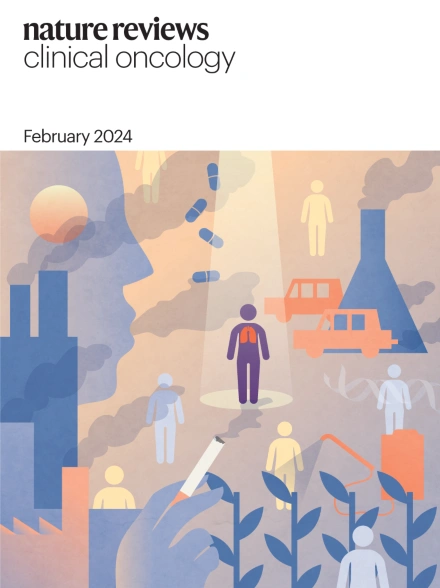Treatment of NSCLC after chemoimmunotherapy - are we making headway?
IF 82.2
1区 医学
Q1 ONCOLOGY
引用次数: 0
Abstract
The treatment landscape of non-small-cell lung cancer (NSCLC) has evolved considerably with the integration of immune-checkpoint inhibitors (ICIs) into first-line regimens. However, the majority of patients will ultimately have primary resistance or develop secondary resistance, driven by a complex interplay of intrinsic tumour biology and adaptive changes within the tumour microenvironment (TME), which can be further amplified by host-related factors such as dysbiosis and organ-specific conditions. Despite these heterogeneous origins, most mechanisms of resistance to ICIs lead to an immunosuppressive TME as the final common pathway. Consequently, current strategies designed to overcome resistance aim to restore antitumour immunity via antibody-based therapies (including bispecific antibodies, T cell engagers and antibody-drug conjugates), targeted therapies, adoptive cell therapies, therapeutic vaccines or intratumoural immunotherapies. Although substantial progress has been made in identifying potential biomarkers associated with immune resistance, the clinical relevance of many of these observations remains limited. Biomarker-driven studies using adaptive, hypothesis-generating designs might offer a promising path forward by navigating the complexity of resistance and enabling the timely evaluation of novel therapeutic concepts. In this Review, we summarize the latest advances in addressing resistance to ICIs in patients with advanced-stage NSCLC and provide insights into emerging clinical strategies and future research directions.化疗免疫治疗后非小细胞肺癌的治疗-我们取得进展了吗?
随着免疫检查点抑制剂(ICIs)纳入一线治疗方案,非小细胞肺癌(NSCLC)的治疗前景发生了很大变化。然而,由于肿瘤内在生物学和肿瘤微环境(TME)内的适应性变化的复杂相互作用,大多数患者最终将产生原发性耐药或发展继发性耐药,而宿主相关因素如生态失调和器官特异性疾病可进一步放大这种变化。尽管有这些不同的起源,大多数对ICIs的耐药机制导致免疫抑制TME作为最终的共同途径。因此,目前旨在克服耐药性的策略旨在通过基于抗体的治疗(包括双特异性抗体、T细胞接合物和抗体-药物偶联物)、靶向治疗、过继细胞治疗、治疗性疫苗或肿瘤内免疫治疗来恢复抗肿瘤免疫。尽管在识别与免疫抵抗相关的潜在生物标志物方面取得了实质性进展,但许多这些观察结果的临床相关性仍然有限。生物标志物驱动的研究使用自适应的、假设生成的设计,可能通过导航耐药性的复杂性和及时评估新的治疗概念,提供一条有希望的前进道路。在这篇综述中,我们总结了解决晚期NSCLC患者对ICIs耐药的最新进展,并对新兴的临床策略和未来的研究方向提出了见解。
本文章由计算机程序翻译,如有差异,请以英文原文为准。
求助全文
约1分钟内获得全文
求助全文
来源期刊
CiteScore
99.40
自引率
0.40%
发文量
114
审稿时长
6-12 weeks
期刊介绍:
Nature Reviews publishes clinical content authored by internationally renowned clinical academics and researchers, catering to readers in the medical sciences at postgraduate levels and beyond. Although targeted at practicing doctors, researchers, and academics within specific specialties, the aim is to ensure accessibility for readers across various medical disciplines. The journal features in-depth Reviews offering authoritative and current information, contextualizing topics within the history and development of a field. Perspectives, News & Views articles, and the Research Highlights section provide topical discussions, opinions, and filtered primary research from diverse medical journals.

 求助内容:
求助内容: 应助结果提醒方式:
应助结果提醒方式:


